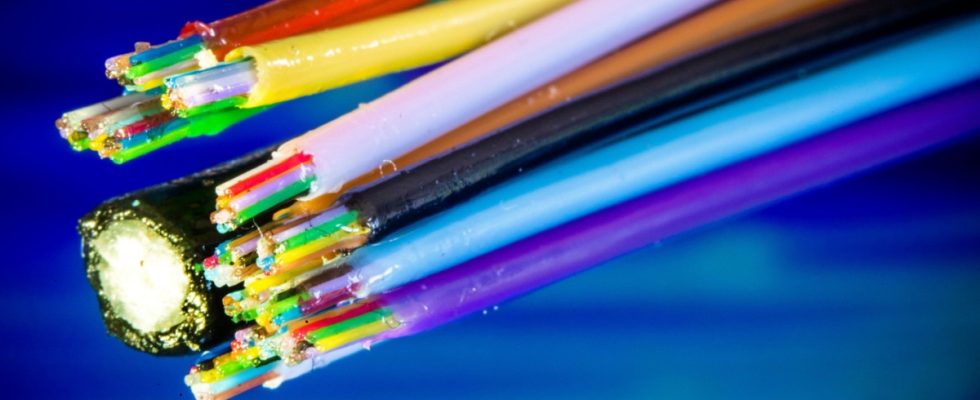Every third household in Germany can now be connected to fast and stable fiber optic internet. Fiber optic connections into buildings or apartments are available for 17.3 million private homes, companies and public institutions, according to a market analysis published on Wednesday by the Federal Association of Broadband Communications (Breko). Competitors of Deutsche Telekom are organized in the Breko association.
The figures show that fiber optic expansion is making rapid progress after a long period of stagnation. A year ago, around every fourth household (26 percent) had fiber optics in the street, at the end of 2020 the figure was only 17.7 percent. The fiber optic expansion has also contributed to the fact that Germany has now worked its way up to the top of the index for the digital economy and society (DESI). In this European comparison, Germany now ranks fourth in terms of the provision of telecommunications services. In 2021 Germany was in eleventh place.
Fiber optic Internet is significantly faster than connections over telephone lines (VDSL). Although television cables can also achieve gigabit speed, fiber optics are considered to be more stable. If many neighbors surf the net in the evening and stream films, the data transmission rate does not drop as much as with TV cables. According to the association, the pace at which further fiber optic expansion will proceed depends on the general conditions. Fiber optic coverage could be between 46 and 60 percent by 2025.
Breko President Norbert Westfal explained: “In order to keep up the current pace, however, we need optimal framework conditions for the strong self-financing fiber optic expansion.” The federal, state and local governments should reduce bureaucracy by promoting the nationwide digitization of approval procedures. Obstacles on the way to achieving the optimal value are also the acute shortage of skilled workers, increased expansion costs and reluctance to buy due to persistently high inflation. “The greatest threat to rapid, nationwide fiber optic rollout is currently the announced or actual dual fiber optic rollout by Telekom.” According to a study by Breko, all non-city states were affected by July 2023. Telekom always rejects the allegations of double expansion. On the one hand, there are a number of regions in which Telekom’s competitors have laid a second fiber optic cable, although the street in question was already supplied by Telekom. In addition, the market has to endure the competition when several providers compete for customers with their own fiber optic lines at the same time. ——————

